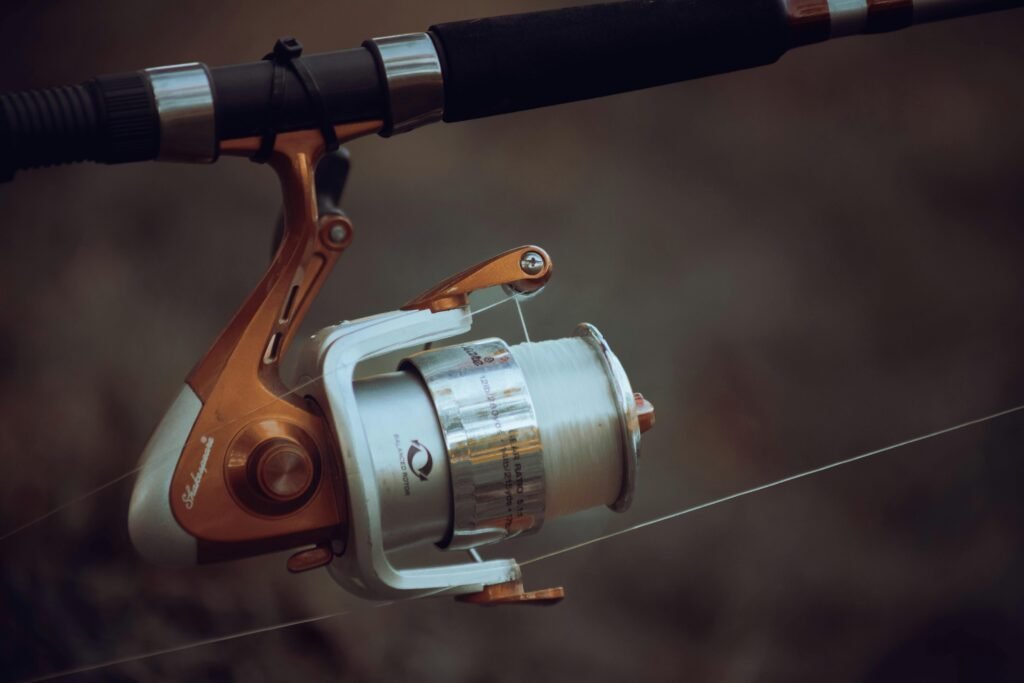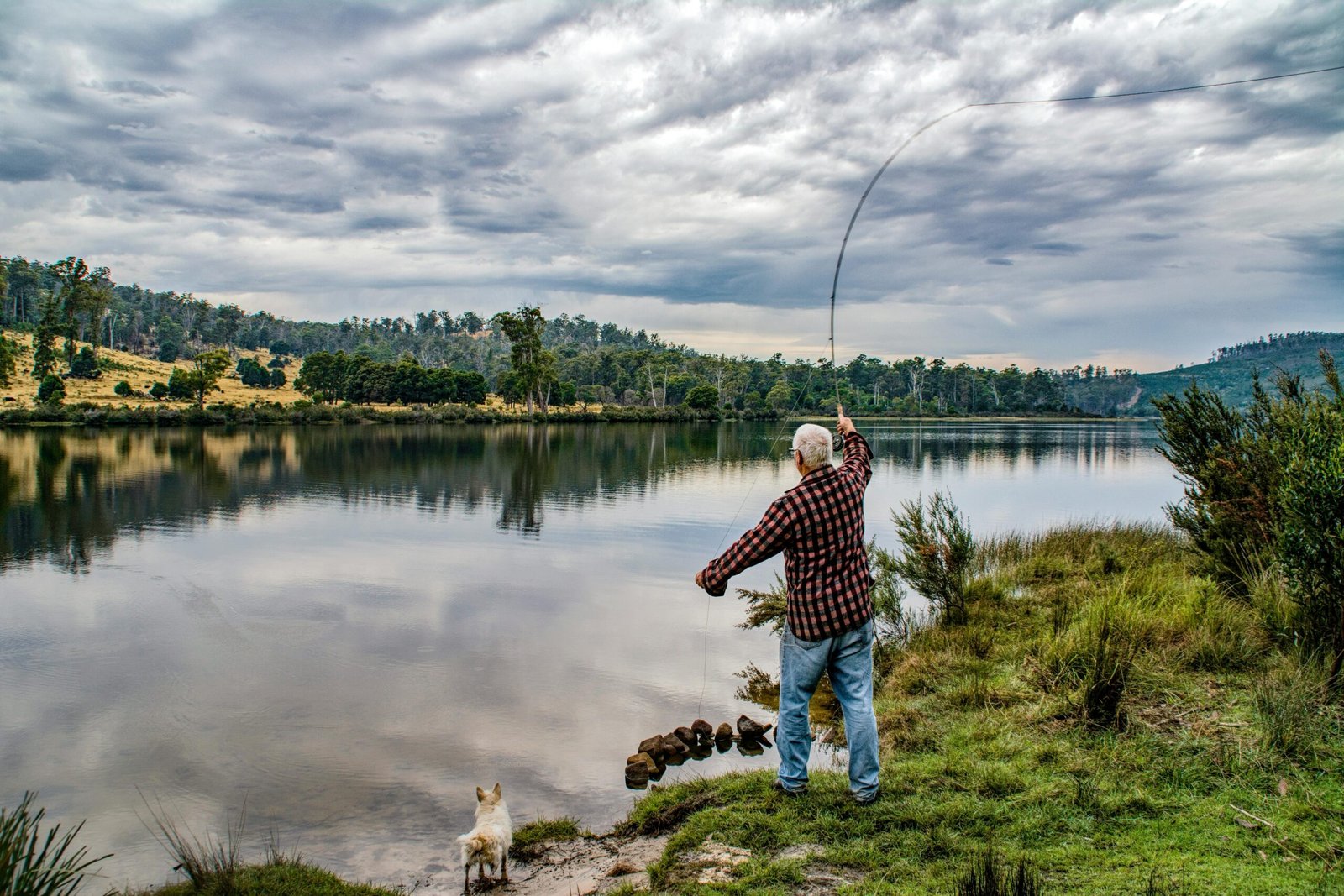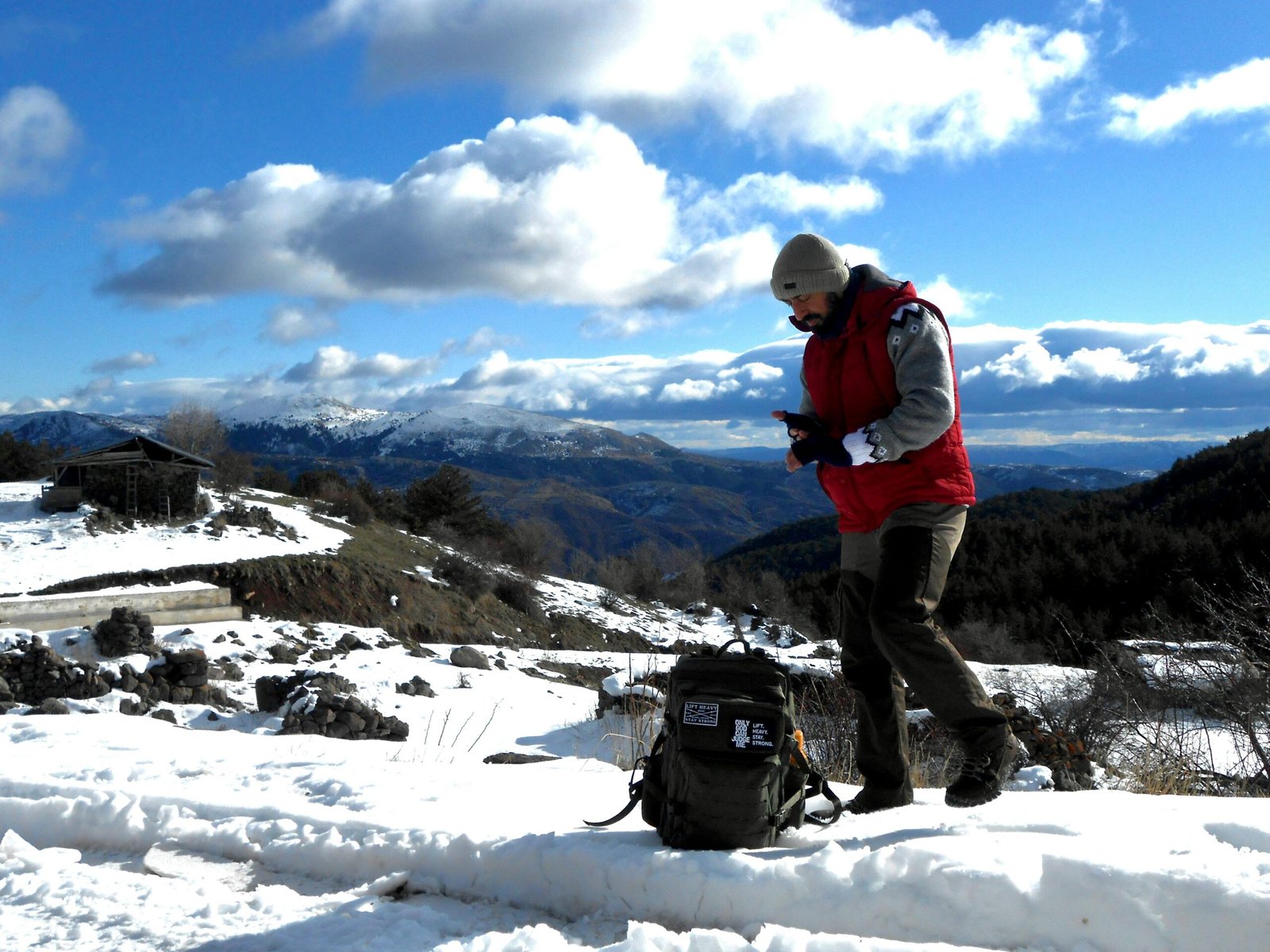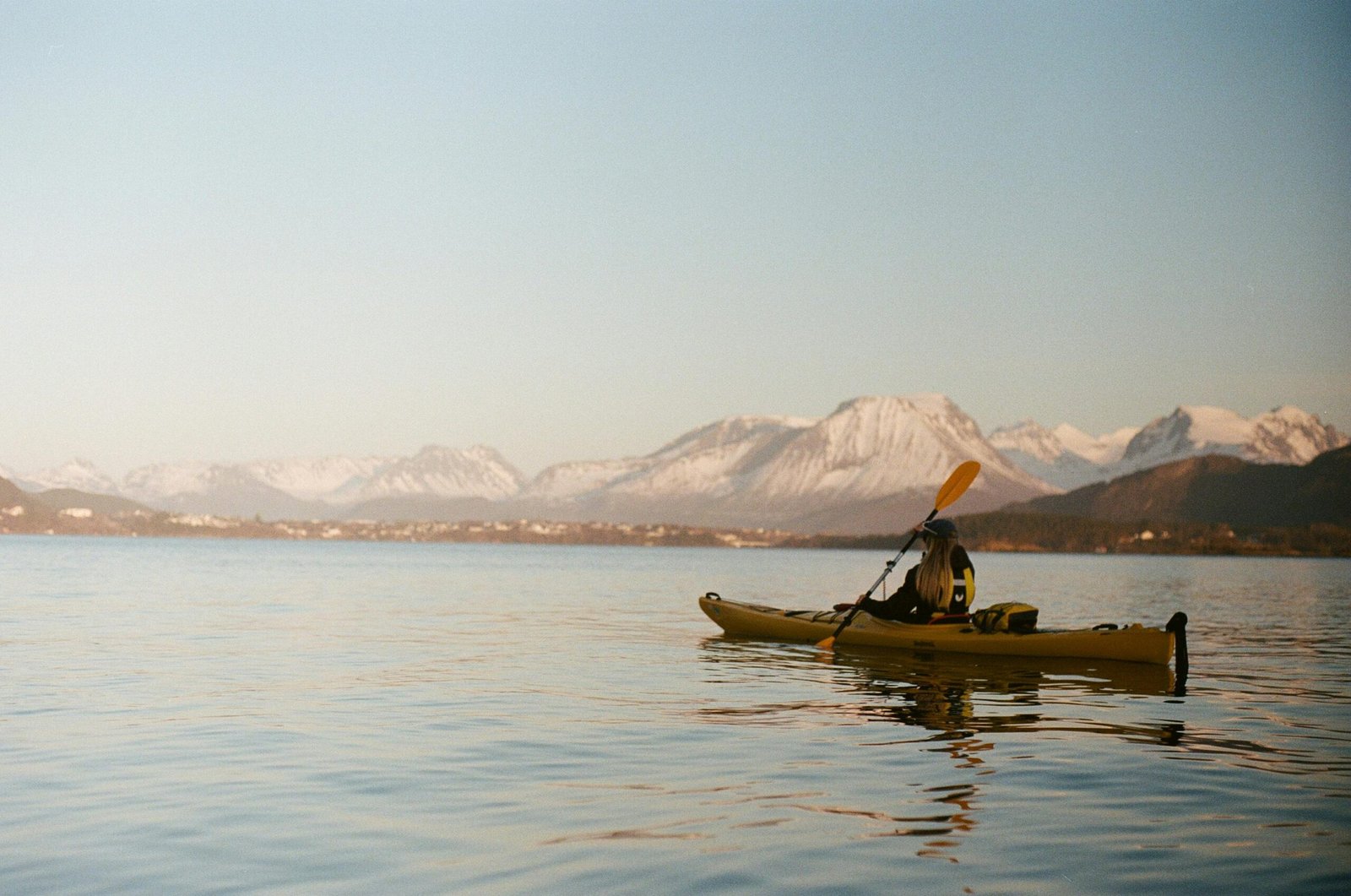Picture this: sunshine sparkling on the water, a gentle tug on your fishing line, and that awesome feeling of connecting with nature. Fishing is a cool way to relax and have fun, especially here in the Pacific Northwest. Washington State has tons of places to fish, from calm lakes full of trout and panfish to rivers with salmon swimming by. Lots of people love fishing here – about 1.2 million fished in Washington in 2022, spending money that helps our state’s economy. But if you’re new, walking into a fishing store can feel like a lot! So many rods, reels, lines, and colorful things in tackle boxes – where do you even start?
Don’t worry! This guide will help you figure out the basics. We’ll focus on simple, reliable gear that works well for beginners fishing in freshwater lakes and rivers around here. You’ll be ready to catch common fish like rainbow trout, panfish (like perch and bluegill), and maybe even some bass.
Your Fishing Gear Basics: Rods and Reels
Your fishing rod and reel are your main tools – they’re what connect you to the fish! Picking the right ones is important, but it doesn’t have to be complicated. For beginners, the easiest option is usually a rod and reel combo.
Combos vs. Buying Separately: Why Combos Rock for Beginners
Sure, some experienced fishers like picking out their rod and reel separately to get exactly what they want for certain fishing styles. But when you’re starting out, buying a combo (where the rod and reel come packaged together) is usually the way to go. Why?
- No Guesswork: Combos are already matched up, so you know the rod and reel work well together.
- Saves Money: They’re often cheaper than buying the same rod and reel by themselves.
- Super Convenient: You can basically take them out of the package and start fishing!
Good brands like Ugly Stik, Shimano, Pflueger, and Abu Garcia make combos that are great for beginners – they’re usually tough, easy to use, and won’t break the bank. Don’t believe the myth that all combos are low quality. While some super cheap ones might not last forever , plenty of good brands make quality combos that are perfect for learning. You can find a solid starter combo for around $50 to $150. This way, you get good gear quickly and can focus on the fun part – fishing!
Rod Basics: Length, Power, and Action Explained Simply
- Length: For fishing in different spots like lakes or riverbanks here in Washington, a rod that’s about 6 feet 6 inches to 7 feet long is a great place to start. It’s a good middle-ground length for casting your line out and controlling it, perfect for the lures and baits you’ll use for trout, panfish, and bass. Shorter rods give you more control up close, longer rods help you cast farther. A 7-foot rod is a popular choice.
- Power: This is about how much strength the rod has, or how stiff it is. They range from “ultralight” (bendy) to “heavy” (stiff). For beginners catching typical PNW fish, a Light (L) or Medium-Light (ML) power rod is usually best. These rods are sensitive enough to feel small bites from trout or panfish, but strong enough if you hook a bigger fish. Plus, lighter rods teach you to use the reel correctly instead of just yanking the fish in.
- Action: This describes where the rod bends. “Fast” action bends mostly at the tip. “Slow” action bends almost the whole way down. For beginners, Moderate (or Medium) action is often perfect. These rods bend more in the middle. This makes casting easier and smoother, helps absorb shock so you don’t accidentally pull the hook out, and gives a good mix of casting distance and feeling bites.
Reel Basics: Spinning Reels are Your Friend
There are different kinds of reels, but the spinning reel is the easiest for beginners to use and works for many types of fishing. They hang underneath the rod and are less likely to get your line tangled up.
- Size: Spinning reels have sizes like 1000, 2000, 2500, 3000. For a good all-around beginner reel for trout, panfish, and bass, pick one in the 1000 to 3000 range (sometimes labeled 10 to 30). A 2500 size is a very popular choice.
- Features: Look for a reel that feels smooth when you turn the handle and has a good “drag” system (that’s what lets line out smoothly when a fish pulls hard, so the line doesn’t break). An anti-reverse switch (stops the handle from spinning backward) is also helpful. Don’t worry too much about the number of ball bearings; a reliable reel with 3-4 bearings is fine to start.
So, to sum it up: A spinning combo with a 6’6″ to 7′ rod that has Light or Medium-Light power and Moderate action is a fantastic starting point for beginner fishing adventures in the Pacific Northwest.
The Fishing Line: Your Connection to the Fish

The fishing line is super important – it’s what connects you to your bait or lure, lets you feel the bite, and handles the pull of the fish. There are a few main types, which can seem confusing at first.
Mono, Fluoro, or Braid? Go with Mono to Start!
There are fancy lines like fluorocarbon (which is almost invisible underwater) and braid (which is super strong and sensitive) , but for most beginners learning freshwater fishing, plain old monofilament (or “mono”) is usually the best way to go.
Here’s why mono is great for beginners:
- Easy to Use: Mono is soft and flexible, making it much easier to tie knots compared to the other types. Good knots are important!
- Forgiving (Stretchy): Mono stretches quite a bit. This means if you pull back too hard when you get a bite, or haven’t quite figured out the reel’s drag yet, the stretch acts like a shock absorber, making it less likely your line will snap or you’ll pull the hook out of the fish’s mouth.
- Cheap: Mono costs way less than fluoro or braid. This is great because beginners sometimes get tangles or need to replace their line more often.
- Floats (Mostly): Mono sinks very slowly, which is good for fishing with bobbers or using lures that stay near the surface.
Yes, mono is easier for fish to see than fluorocarbon and not quite as tough if it rubs against rocks , but for learning the basics, being easy to handle and forgiving is more important.
Line Strength (Pound Test): What You Need
Line strength is measured in “pound test” – basically, how much weight it takes to break the line. For the kinds of fish beginners usually catch in Washington’s lakes and rivers (trout, panfish, average bass), line in the 4- to 12-pound test range works well. A spool of 6-pound or 8-pound test monofilament is a great all-around choice. It’s strong enough for most fish, easy to cast, and not too thick. You might use lighter line (4-6lb) for fish that get spooked easily or for tiny panfish , or slightly heavier (10-12lb) if you’re fishing for bigger bass or in areas with lots of logs or weeds where your line might get snagged. But starting with 6lb or 8lb mono is perfect for most situations.
Hooks, Sinkers, and Bobbers: The Stuff at the End of Your Line
This group of gear is called “terminal tackle” – it’s the stuff you tie onto the very end of your fishing line. Keeping it simple is best for beginners.
Hooks: The Pointy End
The hook is what actually catches the fish! Hook sizes can be a little weird: for numbered sizes (#), the bigger the number, the smaller the hook (a #10 is smaller than a #6). For sizes with a slash and zero (/0, called “aught”), the bigger the number, the bigger the hook (a 4/0 is bigger than a 1/0).
- Good Sizes for Beginners: For common fish like trout and panfish using baits like worms, PowerBait, or corn, hooks in the #6, #8, and #10 range are what you’ll use most. A size #8 is a good all-around starter. For slightly bigger baits or small bass, you might use a #4 or #2.
- Good Types for Beginners: There are tons of hook styles (Aberdeen, Baitholder, Octopus, Circle, Treble… ), but don’t get overwhelmed! Just focus on these simple, effective single hooks:
- Baitholder Hooks: These have little barbs on the long part (shank) to help keep bait, especially worms, from sliding off. They’re a classic choice for bait fishing. Sizes #6 and #8 are good to have.
- Octopus Hooks: These have a shorter shank and a wider gap. They work well for lots of baits and tend to hook fish right in the corner of the mouth. Sizes #6 and #8 are good starter sizes here too.
- Other Hooks (Quick Mention): Treble hooks (with three points) are often used with baits like PowerBait , but they can hurt fish more and are harder to get out, especially if you plan to release the fish. Circle hooks are great because they usually hook fish in the mouth, making release safer , but you need to set the hook differently (just reel steadily, don’t jerk). For starting out, stick with Baitholder or Octopus hooks.
- Barbs: Most hooks have a little barb near the point to keep the fish on. But, you can use pliers to gently flatten the barb. This makes it MUCH easier to remove the hook and is much better for the fish if you’re letting it go. Important: Always check the Washington fishing rules (WDFW regulations) for where you’re fishing! Some places require barbless hooks. Being a responsible angler is important!
Easy Hook Guide for PNW Beginners
This table helps match hooks to common fish and baits:
| Target Fish | Bait | Recommended Hook Type(s) | Recommended Hook Size(s) | Notes |
|---|---|---|---|---|
| Trout (Stocked) | PowerBait Dough | Baitholder, Octopus | #8, #10 | Use enough bait to float hook |
| Trout (Stocked) | Worms (small pc) | Baitholder, Octopus | #8, #10 | Hook worm a few times |
| Trout (Stocked) | Corn | Baitholder, Octopus | #8, #10 | One kernel is often enough |
| Panfish (Crappie) | Small Minnow | Aberdeen, Octopus | #4, #6 | Thin hooks work well |
| Panfish (Crappie) | Small Jig/Plastic | Jig Hook (like Aberdeen) | #4, #6 | Match hook to jig |
| Panfish (Bluegill) | Worm piece | Baitholder, Aberdeen | #8, #10 | Use just a small piece |
| Panfish (Perch) | Worm piece/Minnow | Baitholder, Aberdeen | #6, #8 | Perch aren’t usually picky |
| Bass (Beginner) | Nightcrawler | Baitholder, Octopus | #2, #4, 1/0 | Bigger hook for bigger bait |
Sinkers (Weights): Getting Your Bait Down
Sinkers add weight so you can cast farther and help get your bait down to where the fish are.
- Best for Beginners: Get a small container of removable split shot sinkers. These are little lead (or non-toxic metal) balls that you pinch onto your line, usually about 6-12 inches above the hook. You can easily add more, take some off, or move them around. Common sizes like BB or 3/0 are good to start with. There are other types, but split shot are the simplest for beginners.
Bobbers (Floats): Watching for Bites
Bobbers float on the water and do two things: they hold your bait at a certain depth, and they show you when a fish bites (the bobber will dip, wiggle, or go underwater!).
- Best for Beginners: Simple plastic clip-on bobbers are cheap and super easy. They just clip onto your line with a spring, and you can slide them up or down to change how deep your bait hangs. The classic small or medium red-and-white round ones work great.
Swivels: Stopping Line Twist
A tiny metal piece called a barrel swivel can be helpful. You can tie it between your main line and a short piece of line (called a leader) that goes to your hook. Swivels help prevent your line from getting twisted up, especially when using lures that spin. They aren’t absolutely necessary for basic bobber fishing, but having a few small ones (size #7 or #10) is a good idea.
What Fish Eat: Bait vs. Lures
There are two main ways to catch fish: use real (or prepared) bait, or trick them with artificial lures. Trying out lures is fun, but beginners often have more luck starting with bait.
Easy Bait Fishing: Using What Fish Like to Eat
Bait works because it smells and tastes like food to fish, making them want to bite even if they aren’t super hungry. This often means more bites for beginners who are still learning to feel the fish nibble.
- Top Baits for Beginners:
- Worms (Nightcrawlers/Earthworms): Almost every freshwater fish likes worms – trout, panfish, bass, catfish, you name it. For smaller fish like trout and panfish, use just a small piece (1-2 inches). Thread it onto a #6, #8, or #10 Baitholder or Octopus hook, making sure the hook point is sticking out. Hooking the worm a few times helps keep it on.
- PowerBait: This stuff is like play-dough made especially to attract trout that are stocked in lakes, and it works really well! It comes in different scents (like garlic or corn) and bright colors (like green, pink, orange, or rainbow). Roll a small ball around a #8 or #10 hook (a single hook or a tiny treble hook, size #12-#16 ), making sure the bait floats. People often fish PowerBait near the bottom using a special setup (like a Carolina rig with a sliding sinker) that lets the floating bait drift just above the bottom.
- Corn: Yep, regular canned corn kernels can catch stocked trout! Just put one or two kernels on a small hook (#8 or #10).
- Where to Get Bait: You can buy worms at bait shops or sometimes gas stations. PowerBait and corn are at bait shops and stores like Walmart or Fred Meyer. Pro Tip: Your local bait and tackle shop is your best friend! The people working there usually know what baits are working best right now in nearby lakes and rivers. Ask them for advice!
Lure Basics: Starting Your Fake Food Collection
Lures trick fish by looking like something they eat (like a small fish or bug) or by making noise, flashing, or wiggling in a way that makes fish want to attack. There are zillions of lures , but start with these easy ones:
- Inline Spinners: These have a blade that spins around a wire when you reel it in, creating flash and vibration. Common brands are Rooster Tails, Panther Martins, and Mepps. They catch trout, panfish, and bass, and are super easy to use: just cast it out and reel it back in steadily. Start with small ones (1/16 oz or 1/8 oz) in simple colors like silver, gold, black, or yellow.
- Spoons: These are simple curved pieces of metal that wobble back and forth like an injured fish. Kastmasters and Little Cleos are popular types. Cast them out and reel them in. Small sizes (1/8 oz, 1/4 oz) in silver or gold are great starters.
Get comfortable with these two types of lures first. Bait fishing often gets beginners their first catches faster, which builds confidence and makes fishing more fun!
Other Stuff You’ll Need & Where to Go
Okay, you’ve got your rod, reel, line, hooks, sinkers, bobbers, and some bait or lures. What else? Here are a few more essentials for a good fishing trip.
Must-Haves:
- Washington Fishing License: If you’re 15 or older, you legally need one to fish in Washington. You can buy it online from the Washington Department of Fish and Wildlife (WDFW) website (wdfw.wa.gov), over the phone, or at many stores that sell fishing gear. Sometimes you might need special add-ons (endorsements) or cards (Catch Record Cards) for certain fish (like salmon) or if you want to use two poles. Super Important: Always, always, always read the fishing rules (regulations) for the specific lake or river you plan to fish before you go. Rules cover when you can fish, what size fish you can keep, how many you can keep, what gear you can use (like barbless hooks), and which fish are off-limits. These rules can change! The free Fish Washington app is awesome for checking rules easily.
- Pliers: Needle-nose pliers are super useful for getting hooks out of fish mouths (and sometimes fingers!).
- Line Clippers: For cutting your line after tying knots. Fingernail clippers work fine too.
- Tackle Box/Bag: A small box or bag keeps all your hooks, sinkers, lures, and tools organized.
Nice-to-Haves:
- Landing Net: Helps you scoop fish out of the water easier, especially if you plan to release them. Nets made of rubber or soft mesh are better for the fish.
- Cooler: If you plan to keep fish you catch (and they’re legal to keep!), you need a small cooler with ice.
- Rag/Towel: For handling fish and wiping your hands.
- First-Aid Kit: For small cuts or scrapes.
- Sun Protection: Sunscreen, a hat, and polarized sunglasses (they cut glare on the water and help you see fish!).
- Bug Spray: Bugs like hanging out near water too.
- Camera/Phone: To take pictures of your awesome catches!
Where to Fish & Learn More:
- Finding Fishing Spots: Washington has tons of places! Good spots for beginners are easy-to-reach lakes and ponds, especially those that WDFW stocks with trout. WDFW has great info:
- Their website has a “Places to go Fishing” section.
- They post reports showing which lakes they’ve recently put trout into.
- The Fish Washington app helps find spots too. Many parks have fishing areas or piers on lakes like Lake Washington, Green Lake, Lake Sammamish, and lots of smaller ones. Check the WDFW website – it’s key for finding good, accessible spots!
- Learning More:
- WDFW Website: Has basic fishing info and videos.
- TakeMeFishing.org: A great website with lots of beginner tips.
- Local Tackle Shops: Ask the staff! They usually love to help and know what’s biting locally.
- Online: YouTube has tons of fishing videos. Websites like Reddit have groups (like r/FishingWashington or r/FishingForBeginners) where you can ask questions.
- Friends/Family: If you know someone who fishes, ask them to teach you!
- Fishing Guides: Hiring a guide for a day is a great way to learn fast from an expert.
Fishing Safety & Manners:
- Be Safe: Always look behind you before you cast so you don’t hook anyone or anything! Be careful with sharp hooks. If you’re wading in the water or in a boat, wear a life jacket (PFD). Fishing with a friend is safer.
- Be Cool to Others: Respect private property. Give other anglers plenty of space – don’t cast right next to them or over their line. Keep the noise down. Pack out all your trash, including any tangled fishing line (it’s bad for wildlife!).
- Be Kind to Fish: If you’re releasing a fish, handle it as little as possible and be gentle. Wet your hands first! Try to keep the fish in the water as much as you can. Support its body. If the hook is swallowed deep, just cut the line close to the hook instead of ripping it out. If a fish seems tired, gently hold it upright in the water (facing upstream if there’s current) until it swims away strongly. And always follow the WDFW rules!
Ready to Go Fishing!
Getting started with fishing in the Pacific Northwest doesn’t have to be complicated or expensive. A simple beginner setup – like a 6’6″ to 7′ spinning combo with Medium-Light power and Moderate action, loaded with 6 or 8-pound mono line – will get you going. Add a small tackle box with some #6, #8, and #10 Baitholder or Octopus hooks, some split shot sinkers, a few clip-on bobbers, basic tools like pliers and clippers, and maybe a couple of small spinners or spoons. Grab some worms or PowerBait, get your Washington fishing license, and check the rules for where you’re going.
That’s your basic kit! It’s enough to head out to a local lake or pond and try catching some trout or panfish. Remember, fishing takes practice and patience, but it’s a lot of fun. Ask questions, watch others, and enjoy learning. The beautiful waters of the Pacific Northwest are waiting for you!
When you purchase through links on our site, we may earn an affiliate commission.






One thought on “Fishing Fun 101: Your Easy Guide to Beginner Gear in Washington”
Comments are closed.